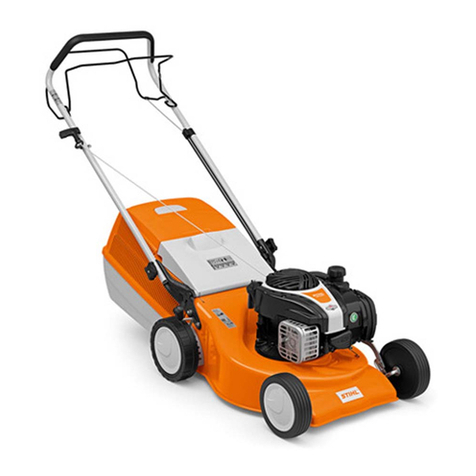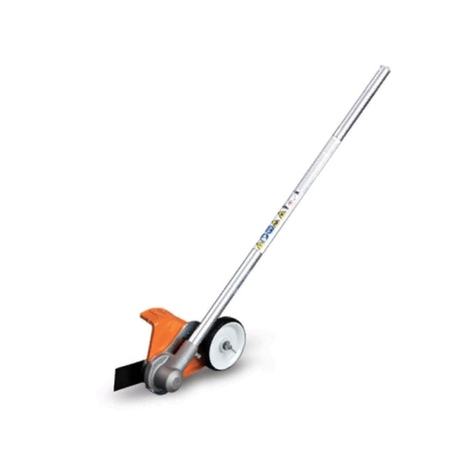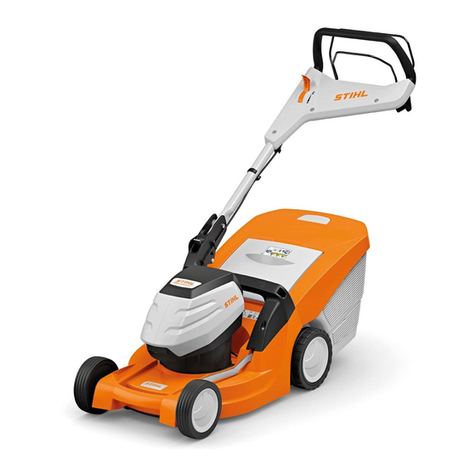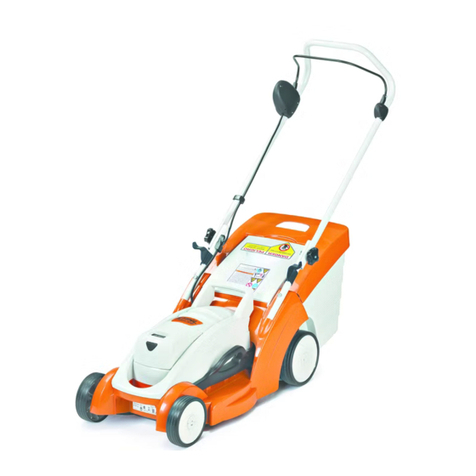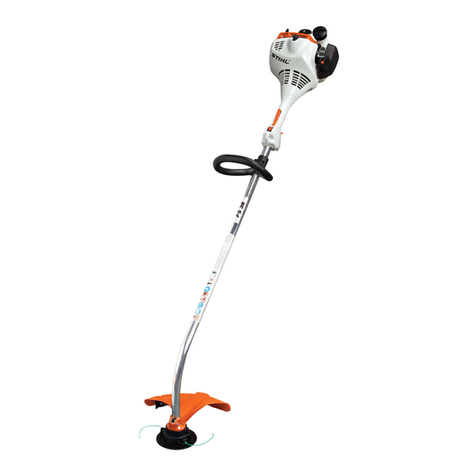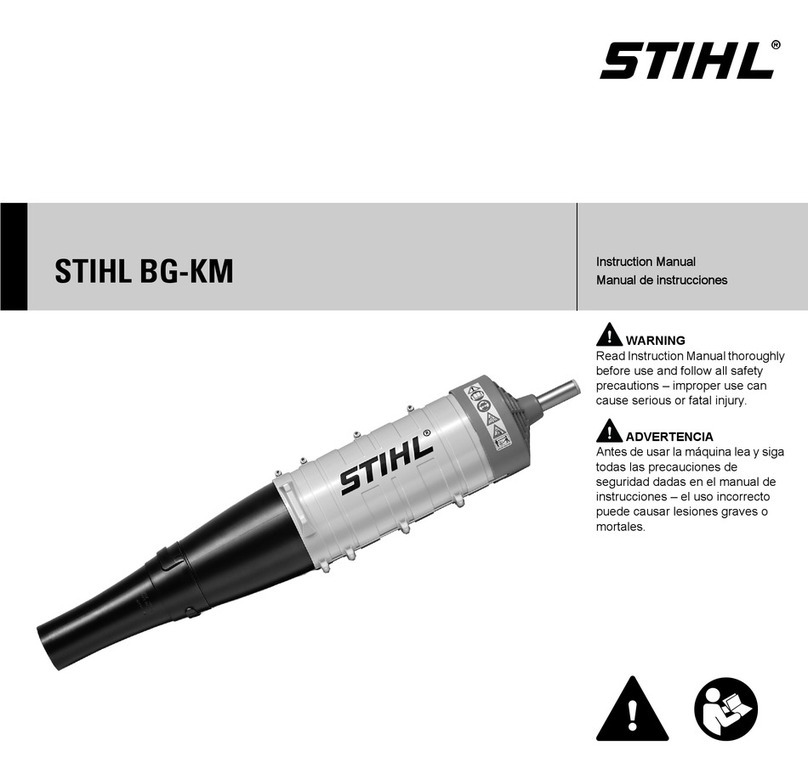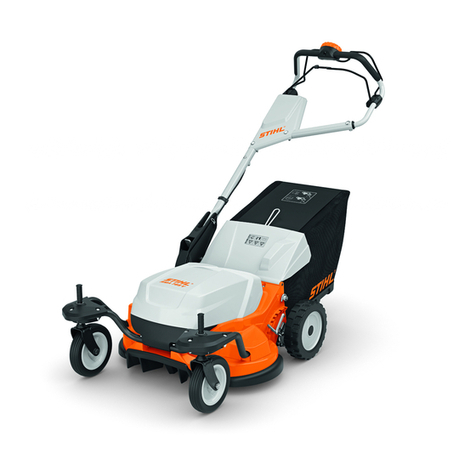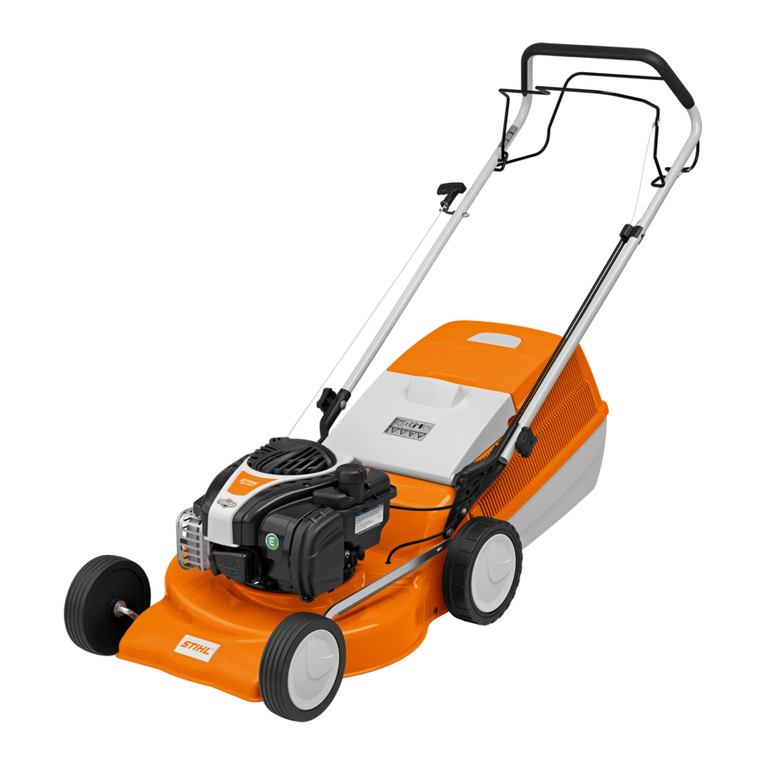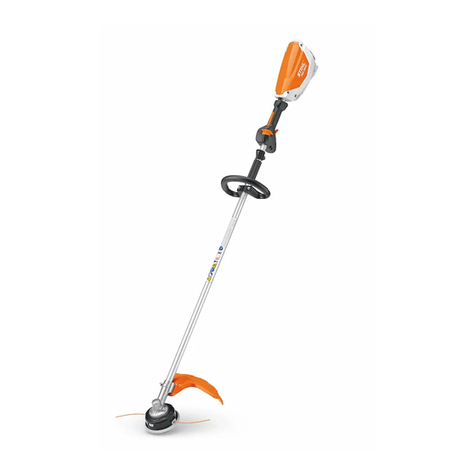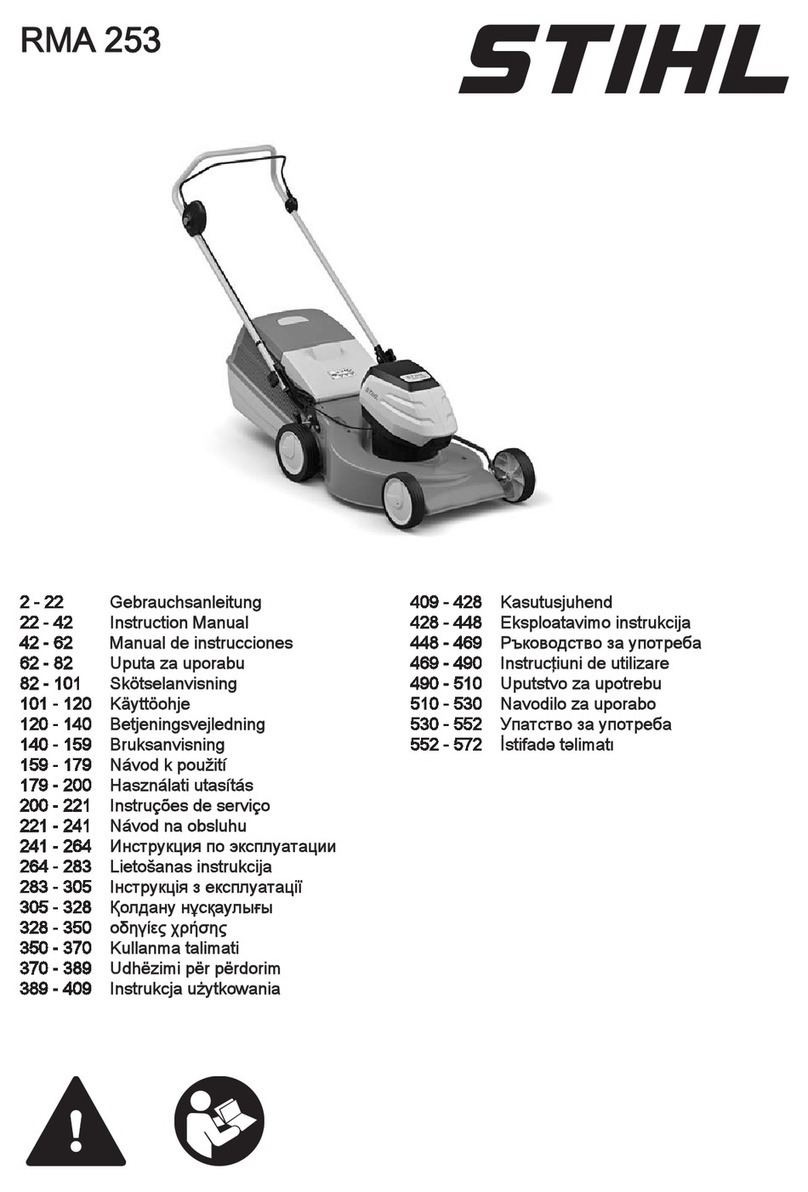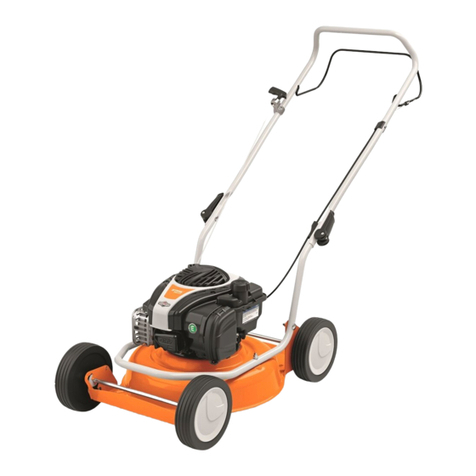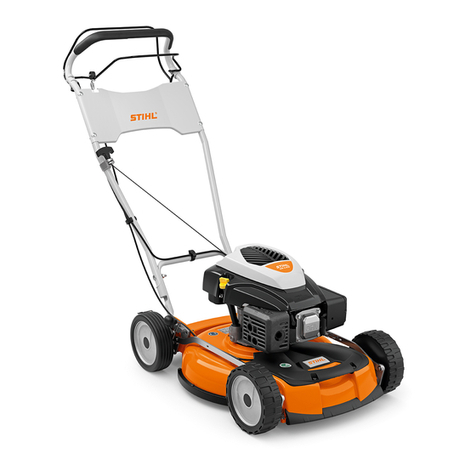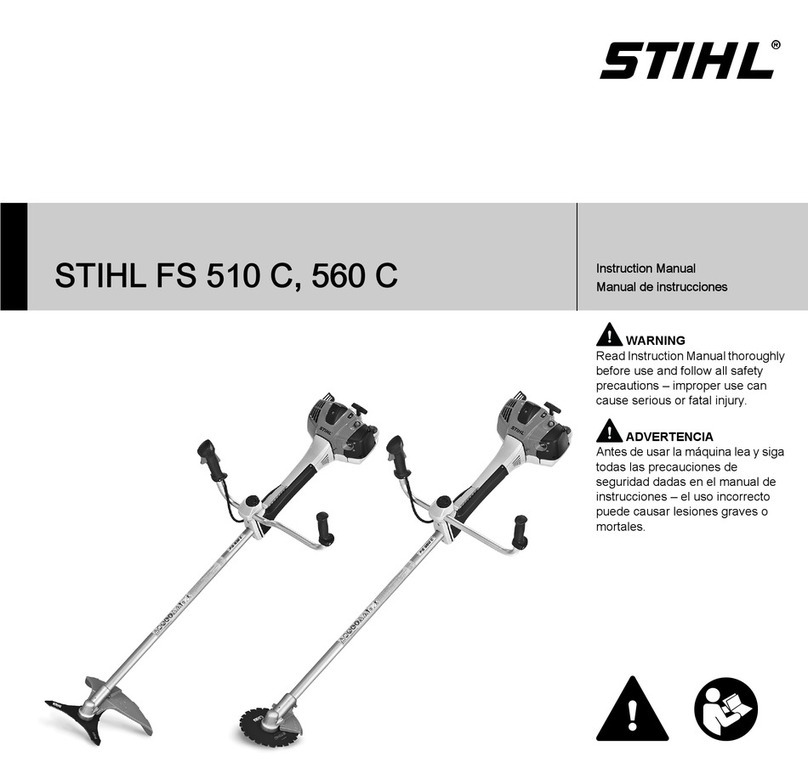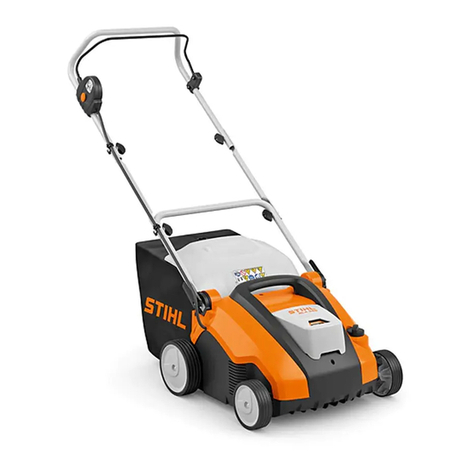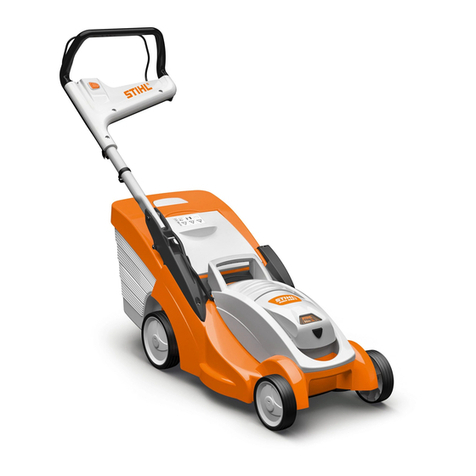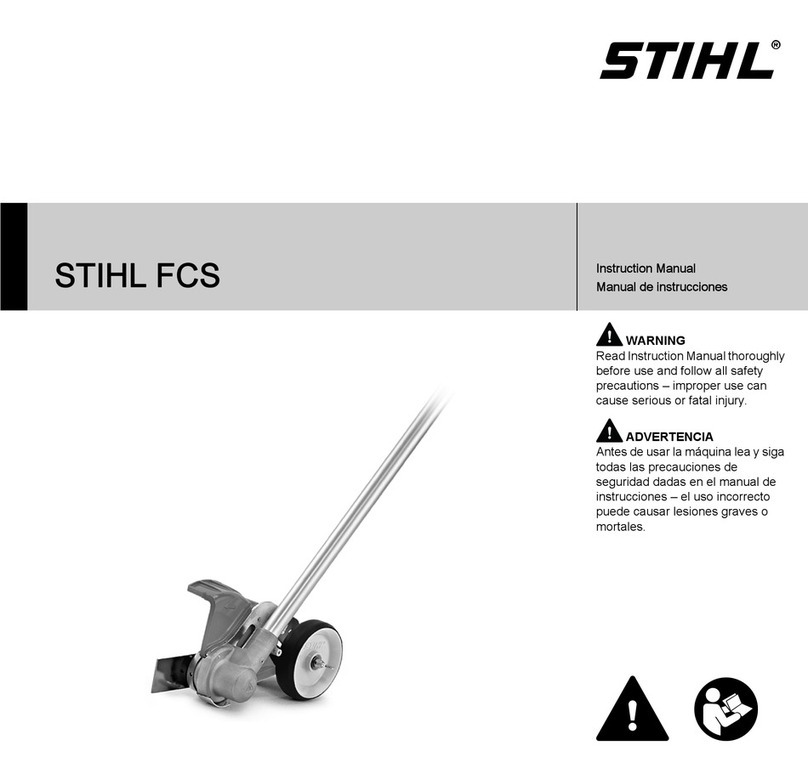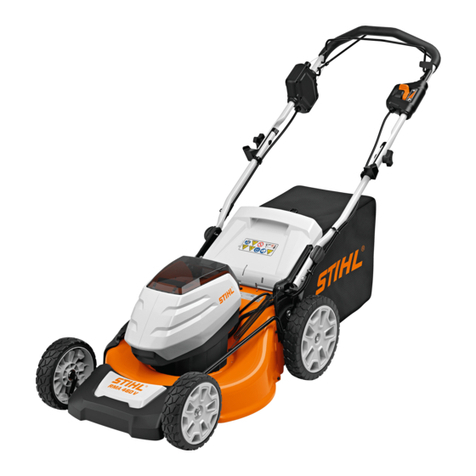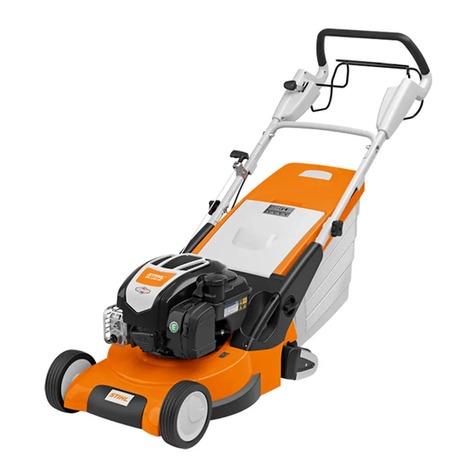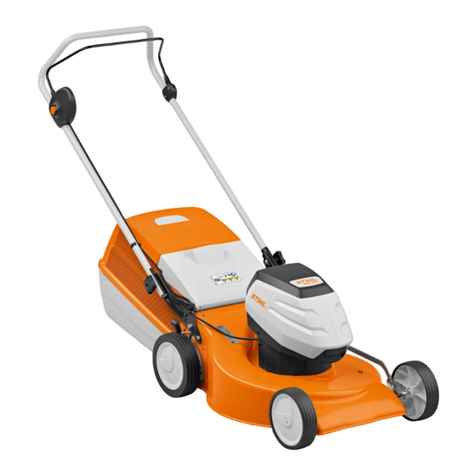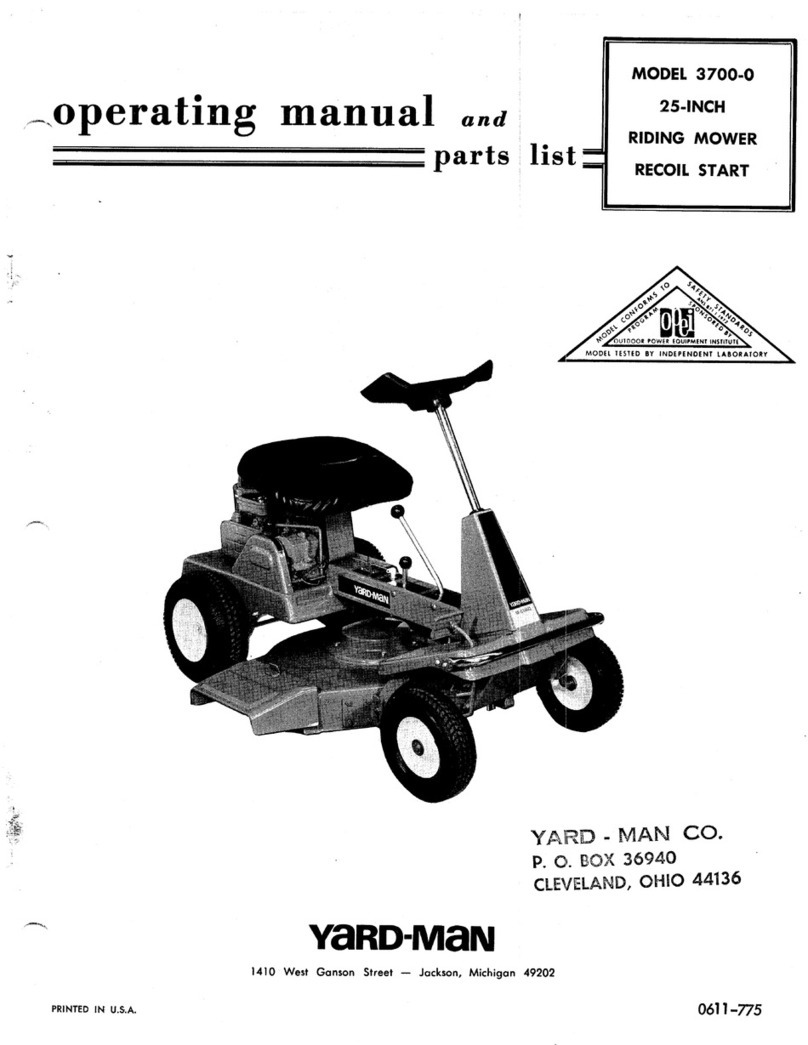
–Clean grass and plant residue off the cutting
attachment mounting at regular intervals –
remove any build up of material from the cut‐
ting attachment and deflector.
Always switch off the power tool and unplug it
from the power supply before replacing the cut‐
ting attachment This avoids the risk of injury from
the motor starting unintentionally.
Do not continue using or attempt to repair dam‐
aged or cracked cutting attachments by welding,
straightening or modifying the shape (out of bal‐
ance).
This may cause parts of the cutting attachment
to come off and hit the operator or bystanders at
high speed and result in serious or fatal injuries.
Use only the deflector with properly mounted line
limiting blade to ensure the mowing lines are
automatically trimmed to the approved length.
To reduce the risk of injury, avoid contact with
the blade.
To reduce the risk of injury, always switch off the
power tool and unplug it from the power supply
before manually adjusting the nylon line.
Using the unit with over-long nylon cutting lines
reduces the engine's operating speed. This
results in overheating and damage to the motor.
To reduce the risk of injury, never use wire in
place of the nylon cutting line.
If your power tool is subjected to unusually high
loads for which it was not designed (e.g. heavy
impact or a fall), always check that it is in good
condition before continuing work – see also
"Before Starting Work". Make sure the safety
devices are working properly. Do not continue
operating your power tool if it is damaged. In
case of doubt, consult your servicing dealer.
Before leaving the power tool unattended: Switch
it off and disconnect the plug from the power
supply.
2.9 Vibrations
Prolonged use of the power tool may result in
vibration-induced circulation problems in the
hands (whitefinger disease).
No general recommendation can be given for the
length of usage because it depends on several
factors.
The period of usage is prolonged by:
–Hand protection (wearing warm gloves)
–Work breaks
The period of usage is shortened by:
–Any personal tendency to suffer from poor cir‐
culation (symptoms: frequently cold fingers,
tingling sensations).
–Low outside temperatures.
–The force with which the handles are held (a
tight grip restricts circulation).
Continual and regular users should monitor
closely the condition of their hands and fingers. If
any of the above symptoms appear (e.g. tingling
sensation in fingers), seek medical advice.
2.10 Maintenance and Repairs
Always switch off the machine and disconnect
the plug from the power supply before carrying
out any maintenance work to reduce the risk of
injury from the motor starting unintentionally.
Service the machine regularly. Do not attempt
any maintenance or repair work not described in
the instruction manual. Have all other work per‐
formed by a servicing dealer.
STIHL recommends that you have servicing and
repair work carried out exclusively by an author‐
ized STIHL servicing dealer. STIHL dealers are
regularly given the opportunity to attend training
courses and are supplied with the necessary
technical information.
Only use high-quality replacement parts in order
to avoid the risk of accidents and damage to the
machine. If you have any questions in this
respect, consult a servicing dealer.
STIHL recommends the use of genuine STIHL
replacement parts. They are specifically
designed to match your machine model and
meet your performance requirements.
Never attempt to modify your power tool in any
way since this will increase the risk of personal
injury.
Regularly check that the insulation of the power
cord and plug is in good condition and shows no
sign of ageing (brittleness).
Electrical components, e.g. power cord, may only
be repaired or replaced by a qualified electrician.
Clean plastic components with a cloth. Do not
use aggressive detergents. They may damage
the plastic.
Do not spray the machine with water.
Check tightness of mounting screws on safety
devices and the cutting attachment and retighten
if necessary.
English 2 Safety Precautions and Working Techniques
6 0458-282-0121-C
